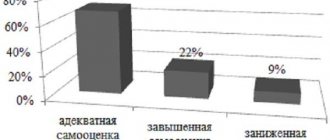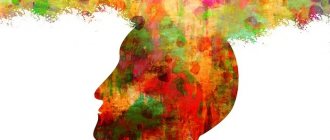Reminiscence is a mnemonic effect characterized by sudden recollection of perceived material without its repetition after a long time (from one day to 7, or even a longer period of time). Reminiscence is a mental phenomenon that often occurs during the perception of information material with internal logical connections of the content, making a strong emotional impression on the individual. The exact causes of sudden memories are not yet understood.
Plato
The authorship of the ancient Greek philosophical term should be attributed to Plato. The concept was used in Plato's doctrine of the nature of the human soul and the doctrine of ideas. Plato believed that intuition serves as a tool for the soul to collect information about another world. This term is found in three of Plato's major works. In the Meno, Socrates talks about the universal relatedness of objects to each other, thanks to which one can literally remember everything and find everything. The Platonic concept, put into the mouth of Socrates, is that the mechanism of recollection ( anamnes
,
anamnesis
, ancient Greek ἀνάμνησις) opens access to judgments about causes. The Phaedo repeats the dogma that knowledge is actually recollection. In the Phaedrus, Plato postulates reminiscence (remembering) as initiation into the sacraments and an approach to spiritual perfection.
What is reminiscence
The word reminiscence comes from Latin and means “remembering.” A synonym for this concept is borrowing, hint, echo.
The phenomenon of reminiscence is a conscious or unintentional mention in the text of a well-known cultural fact, as well as of another work. This may be a repetition of a figurative or phrasal structure.
There are hidden reminiscences designed for recognition. By the way, unlike a quotation, reminiscence can be unconscious by the author.
It also differs from ordinary copying, plagiarism and compilation, because it is always creative and intellectual in nature.
Characteristics and properties
Reminiscence is characterized by the following properties:
- This is a common phenomenon, affecting 41% of cases, among which there is a place for incoherent, unintelligible material. That is, the situation is typical for those who “just like that” can remember an event in life while going about their business.
- The rich content of reminiscence suggests that the emergence of memory echoes may indicate a disruption in brain function. This process is characterized by a sharp memory that a person can convey through speech with accurate data.
- The semantic content will always exceed the meaning of memories for a person. That is, he will talk about what he sees “inside his head,” without understanding why exactly he remembered it and keeps it in his subconscious.
- This phenomenon is typical for those. Who is already leaving this world. Before death, people often experience a process of reminiscence to make death seem less futile. Having lived for many decades, “life flashes before your eyes.” This phenomenon helps brighten up the process of dying.
Reminiscence does not have properties, since the process is a property of other situations that arise with a person:
- Changes in the sensitivity of a sensory organ under the influence of a stimulus. Along with reminiscence, apathy, synesthesia and adaptation to what is happening are observed.
- The properties of information perception cannot be associated with reminiscence. This sense organ will always transmit only positive results to the brain after searching for the desired memory.
- Distorted perception of an object (déjà vu syndrome) gives rise to illusion, reminiscence, apperception and integrity. If an organ does not work correctly, a person may mistake for one object a completely different one, which will be identified with other senses.
Accordingly, social memory was formed as a collective memory, which is a set of actions taken by society for the value-symbolic reconstruction of the past in the present. The preservation of the past as a collective memory in traditional society was determined by its very way of life.
In modern and postmodern society, collective memory, precisely because of its axiological load, often becomes a source of legitimization for those social groups that, through manipulation of the value-semantic content of the historical past, which constitutes a significant section of social memory, try to create in the mass consciousness one or another often falsified image of the past:
- Expanding the mental capacity of social memory allows us to better understand the value of the past, the meaning of the present and the hypothetical significance of the future, which to a certain extent can prevent manipulation processes.
- The richer the social memory, the richer the historical and actual existence of man and society.
- It is the essential, existential significance of social memory in modern society, especially during the period of revaluation of the value-semantic existence of society, that is especially significant, since it is it that can, on the one hand, most adequately identify the process of self-identification of society, and on the other hand, reveal possible variable-modal characteristics of his future.
- The existence of social memory in its various forms is the subject of theoretical discourse within the framework of modern humanitarian knowledge.
The most productive properties are:
- associationist;
- cognitive;
- cultural and historical;
- semiotic.
Simultaneously with the crisis of positivism, the idea of reminiscence within the framework of cognitive psychology lost its attractiveness. A way out of this situation was proposed by the domestic school of psychology in the works of L. S. Vygotsky, A. Ya. Luria, A. A. Leontiev, where a scientific position clearly emerges, which allows us to consider memory as a cultural and historical phenomenon.
Management methods
A hypothesis has been put forward about the prospects of using reminiscences in the pedagogical process as one of the effective methods of forming social memory.
Analogy method
The technique helps to establish the reasons that cause a surge in reminiscence. The author of the diagnostic analysis is psychologist L. Shvets.
He also proposed using the method to establish the reasons why a person may experience psychological personality disorders.
Modal method of discourse
The modal method is an epistemological variation of the onto-epistemological method, which acts as the main tool in research.
The use of the modal method, which is still weakly engaged in philosophical and sociological knowledge, can help reveal new aspects of the transmutation of the value-semantic content of social memory:
- The modal method of research is understood as a method of cognition in which the main characteristics of the phenomenon under consideration depend on the nature of the reliability it establishes, which can act as possible, actual or necessary.
- Modal methodology allows us to resolve the paradox of “plural understanding” of the phenomena of social memory.
The modal discourse method can be completed in a clinical hospital for free, but only when a person is registered.
Philosophical method
Reminiscence in psychology is a connection with memory, which allows you to restore a cultural and historical connection with previous events. S. V. Dementieva proposed a variant of philosophical analysis of the role of reminiscences in the social memory of society. It, according to S.V. Dementieva, allows one to deepen the mental capacity of social memory.
The author emphasizes that in reminiscent reflection and comprehension of the world of culture there are no main and secondary lines. Depending on a person’s ability to creatively comprehend cultural phenomena, on his personal mental capacity, secondary plots can turn into main ones, and vice versa.
The fact of reminiscence in the science of personality psychology is regarded as a person’s ability to remember vague and unconscious materials that could not be obtained in a normal state.
At the same time, reminiscence is the uncontrolled ability of a person to selectively produce facts from the depths of memory. If such a phenomenon occurs during a crisis, the process can be subjected to diagnostics and management methods.
Reminiscence in literature
To understand the problem, one must distinguish reminiscence from literary borrowing. In the first case, everything happens unconsciously, with the aim of realizing specific artistic goals. Not everyone can detect such a phenomenon. Only prepared and insightful readers, listeners or viewers succeed in this.
Reminiscence is the author’s unconscious use of the experience of predecessors. There are many examples in world literature:
- "The Glass Bead Game" by German writer Hermann Hesse, 1943.
- Ulysses is a novel by Irish author James Joyce, which was published in its entirety in 1922.
- "The Long Walk to the Tea Party" by English writer Anthony Burgess.
- Works of the American poet Ezra Pound.
What is reminiscence?
The phenomenon of reminiscence remains far unexplored, since it is still impossible to logically understand how memories arise that a person did not remember. Reminiscence refers to memories that a person reproduces without repeating them several days or even years after remembering them. Moreover, these memories are very clear and logically constructed. Undoubtedly, such memories evoke emotions in a person who did not even suspect they existed.
Reminiscence is the reproduction of information some time after its perception, which happened unconsciously, without repetition or intentional human participation.
This concept was described in 1907 by the Serbian scientist Urbancic, who observed how people reproduce verbal, nonverbal and sensorimotor material. Scientists note this phenomenon in children of preschool and school age. They are the ones who can reproduce the material several years after it was perceived, when this happened once, without memorization.
Many psychologists have been interested in the phenomenon of reminiscence. Everyone tried to describe this phenomenon, trying to explain the mechanism of its occurrence. However, so far no one has managed to do this. It’s just that a person automatically performs actions or reproduces material, which happens not by his will, but unconsciously.
Reminiscence appears as often as the material is interesting to a person. For example, logical chains are more often reproduced than incoherent material, and what is interesting to a person can pop up in the head just a few months after it is perceived.
Reproduction is influenced by many factors. For example, if a person does not master the material sufficiently, then it is not reproduced.
- If the material is reproduced immediately after it has been memorized, then the individual relies on associations.
- If information is reproduced some time after receipt, then it is based on logical connections.
Reminiscence often manifests itself in children, since it is based on the unreflective perception of information. This happens when a student memorizes material but does not understand it, or when a student learns a poem without understanding it or emotionally perceiving it. As soon as the test is passed or the teacher hears the poem, the information will be erased from the conscious part of the memory.
Thus, reminiscence is the perception of material without understanding it. There is simply memorization by repeating it many times, so that later it can be forgotten (the information will go into the subconscious) as soon as it is used or will not be used for a long time. Reproduction of this material after some time will be a reminiscence, when a person suddenly remembers what he forgot, and this will be facilitated by favorable environmental conditions.
Reminiscence is a sudden memory. The person doesn't remember him. A person does not participate in the process of remembering it, that is, he is not even aware of its presence. However, certain conditions arise in the external environment that help to pull out certain information from the unconscious. This happened to everyone. Eg:
- Someone could remember the words of the song.
- Someone could remember events that preceded memory loss.
- Someone suddenly remembered the material that was told by the teacher at school.
The person is not trying to remember something. Reminiscence is memories that arise suddenly and unexpectedly for the person himself, but he forgot about them or did not even know that he had them.
In psychiatry, reminiscence refers to intrusive images and memories that are often reflected in nightmares.
A deviation from truly forgotten memories is a type of paramnesia - pseudo-reminiscence. This is when past events are distorted in memory and incorrectly localized in time due to negative emotions that arose at the moment of remembering them.
Causes
The presence of moments of reminiscence is often the norm, based on the peculiarities of memory functioning. The effect is most common in childhood, especially if the initially remembered material has a strong emotional overtones and internal logical connections. If an emotional reaction at the first moment may interfere with the reproduction of acquired knowledge, then after “processing” the material, logical connections are “activated.” This is what allows you to remember something in more detail and correctly after some time.
Students also encounter reminiscence when actively preparing for exams. And what comes to the fore is not understanding the material, but targeted memorization. When initially retelling a large amount of educational material studied at once, its retelling may be incomplete, in particular under the influence of fatigue and boredom. After a day or more, remembering (reminiscence) is easier, and information is perceived to a greater extent.
Psychological reasons
From a psychological point of view, the reminiscence effect manifests itself due to the normalization of the state when fatigue passes. The material “fits” in your head, which makes voicing it later easier. Loading…
Another option for explaining the feature is the absence of “layering” of additional details on previously obtained data. In a situation where a person tries to remember many facts at once, they “overlap” each other. Because of this, confusion arises, conditioned forgetting. After a certain break, reminiscence can manifest itself, since there is no additional load on the memory.
Psychologists also believe that even when memorization stops, the involuntary process of repetition continues in the mind. This allows you to thoroughly remember any data. And then leads to reminiscence in certain circumstances.
Russia
At the same time, the word entered the Russian language as an everyday Gallicism and allusion. In a letter dated February 1, 1840 to the Russian historian T. N. Granovsky, the philosopher and poet N. V. Stankevich called the platonic relationship of the addressee with N. V. “reminiscence.” In the second half of the 19th century, the word became a traditional musical term. In a letter to the Russian composer M. P. Mussorgsky, pianist and conductor M. A. Balakirev dated June 10, 1863, gave a description of the past opera through musical “reminiscences.”
In the modern period in Russia, the methodological problems of literary reminiscence were dealt with by M. M. Bakhtin, D. S. Likhachev, Yu. M. Lotman, A. Gollovacheva (), A. Arkhangelsky () and P. Bukharkin (). A number of fruitful solutions were found by Lo ().
In the early 1990s, reminiscence in drama (in the works of N. Sadur and others) was carried out by St. Petersburg mass media arts theorist T. A. Marchenko and her students.
A little about the name
One way or another, we can make an unambiguous conclusion that the production of strong alcoholic drinks based on distillation originated in Rus' in the period from the 13th to the 15th centuries.
Yes, drinks appeared, but what were they called? This is also interesting... Most researchers agree that such an alcoholic drink was called “bread wine” in Rus'. This name existed until the beginning of the 20th century.
When did the word “vodka” appear and what did it mean? The first written records of this word indicate its use in relation to drugs made from bread wine. The word vodka was used in this capacity until the beginning of the 17th century. Since this century, in historical and literary sources the word “vodka” appears in relation to an alcoholic drink.
Field Marshal Count Sheremetyev, a comrade-in-arms of Peter I, often described in his field journal how he and the sovereign “ate votka.” There are records in the letters of contemporaries how the tsar often went to his favorite austeria for a glass of votka. The same spelling of the word is also found in the decree of Empress Elizabeth Petrovna “on the tax on alcohol” of 1751.
However, most sources still use the name “vodka”.
As a rule, this word was used to describe bread wine, flavored with herbs and with an additional one distillation - the so-called “simple vodka”. The word vodka stuck in this meaning until the 60s of the 19th century. From that time until 1936, the word vodka was used to describe all strong alcoholic drinks. And, since 1936, vodka began to be called a mixture of 40% rectified alcohol and water, passed through a carbon filter.
Reminiscence in psychology
Scientists have not sufficiently studied the causal sequence of the occurrence of sudden memories, the factors causing sudden recall, but the mechanism of the reminiscence effect itself has been studied, relying on the works of domestic and foreign researchers.
The mechanism of occurrence of a sudden memory is due to the action of affective inhibition, due to expressed emotional experience, impressions of the perceived information material. Emotional inhibition affects the nature of the reproduced material. When reproducing memorized information, the story begins with the part that made the most vivid impression, while the logical connection between the reproduced information is lost. In the case of delayed reproduction, the information does not lose its logical sequence.
From a psychological point of view, reminiscence is the process of normalizing the state of fatigue after intense physical, intellectual or emotional stress. Information material, after it is perceived by an individual, is organized in the head, after which it becomes easier for a person to voice it.
Also, sudden recollection occurs in the absence of layering of many details of one logical phenomenon, in which confusion arises. Conditioned forgetting may occur, but after an interval during which the individual is not exposed to stimulus material and there is no additional load on memory, sudden recollection may appear.
Reminiscence depends on an allusion, which is only a hint, a hint that pushes to the desired thought. As a result of an allusion, an individual experiences a sudden memory. Allusion is an external phenomenon, a stimulus factor that provokes the appearance of the internal phenomenon of reminiscence.
The phenomenon of reminiscence is also considered from the point of view of pathology in psychology, when a traumatic event takes place and memories take on the character of intrusive and negative ones. When faced with external circumstances similar to those of a traumatic event, a person may experience emotional discomfort associated with the effect of obsessive reminiscence. This state directly depends on the initial emotional state of the individual.
The phenomenon of sudden recollection in an intrusive form can be observed in individuals with PTSD. Reminiscence in these cases manifests itself in dreams with memories of the acquired traumatic experience.
Sudden recall of previously perceived information is often a natural feature of human memory.
If we consider reminiscence from the perspective of psychiatry, it can be a symptom of diseases such as traumatic brain injury, alcohol or infectious intoxication, brain pathologies and others.
Reminiscence in psychiatry is considered as a form of obsessive states, as a manifestation of neuroses, as a symptom of depressive states, manifested by uncontrolled chaotic thoughts. Sudden memories can occur during panic states, fears and phobias.
The manifestation of reminiscence, as a pathological symptom, is characterized by intrusiveness of thoughts and images, and also causes a fairly expressive emotional reaction in the individual (worry, anxiety, panic reactions, fears).
Reminiscence can become an object of attention in the practical activities of a psychologist, correctional activities with the aim of replacing negative experiences with positive ones, in the treatment of conditions associated with traumatic situations. Specialist interventions require both obsessive reminiscences with negative emotional symptoms and the complete absence of this memory effect, which may signal disturbances in the functioning of the central nervous system or early senile dementia.
If a sudden memory occurs in a pathological manifestation, then the intervention of a specialist is necessary, who will determine the medicinal principles of treatment of the disease, the manifestations of which are reminiscence. Also, a qualified specialist must select effective and appropriate psychotherapeutic tactics for the disease.
We are on Telegram! Subscribe and be the first to know about new publications!
Causes
The presence of moments of reminiscence is often the norm, based on the peculiarities of memory functioning. The effect is most common in childhood, especially if the initially remembered material has a strong emotional overtones and internal logical connections. If an emotional reaction at the first moment may interfere with the reproduction of acquired knowledge, then after “processing” the material, logical connections are “activated.” This is what allows you to remember something in more detail and correctly after some time.
Students also encounter reminiscence when actively preparing for exams. And what comes to the fore is not understanding the material, but targeted memorization. When initially retelling a large amount of educational material studied at once, its retelling may be incomplete, in particular under the influence of fatigue and boredom. After a day or more, remembering (reminiscence) is easier, and information is perceived to a greater extent.
Psychological reasons
From a psychological point of view, the reminiscence effect manifests itself due to the normalization of the state when fatigue passes. The material “fits” in your head, which makes voicing it later easier.
Another option for explaining the feature is the absence of “layering” of additional details on previously obtained data. In a situation where a person tries to remember many facts at once, they “overlap” each other. Because of this, confusion arises, conditioned forgetting. After a certain break, reminiscence can manifest itself, since there is no additional load on the memory.
Psychologists also believe that even when memorization stops, the involuntary process of repetition continues in the mind. This allows you to thoroughly remember any data. And then leads to reminiscence in certain circumstances.
Psychological theories and schools
Reminiscence in psychology, according to the concept of M. Wartovsky, these artifacts act as the objectification of human needs and intentions, already saturated with cognitive and affective content.
- The first level of artifacts consists of the so-called primary artifacts.
- Secondary artifacts include, in addition to primary artifacts, ways of using them.
- The third level is a class of artifacts that, while remaining intermediaries between a person and the cultural world around him, at the same time go beyond their own limits, constituting, as it were, their own, autonomous world.
There is a unified theory that shows the specifics of the analysis of social reminiscence. It is based on the works of Yu. N. Davydov, V. A. Kolevatov, A. I. Rakitov, M. A. Rozov, L. P. Shvets, in which social memory is considered from the perspective of information theory.
Forms of manifestations
An analysis of modern philosophical literature devoted to the problems of reminiscences has made it possible to identify the specifics of the emergence of reminiscences and to reveal their functional and semantic characteristics.
In the process of the emergence of reminiscences, both 2 homogeneous (to a certain extent) and 2 heterogeneous cultural phenomena can be involved. One of them is the essence that is designated in this process, and therefore acts as the primary subject form of manifestation.
The second is an auxiliary entity (secondary, subsidiary subject), as a form of manifestation.
It is correlated with the designation of a ready-made name:
- The heterogeneity of these entities and the associated associative complexes make it possible to go beyond the boundaries of both the old and the new circle of ideas, synthesizing a fundamentally new reality.
- The process of reminiscentization itself can be considered as a problematic cognitive-nominative situation with many variable factors, among which there may be facts of a person’s personal intellectual, spiritual cultural life, and the existence of the society in which a person lives.
- The reminiscent process is extremely rich and diverse in its forms of manifestation. It covers the entire intention of the subject of reminiscence, including the moment of choosing one or another way of expressing the meaning of reminiscence.
The idea of reminiscence is an urgent need to name a conscious (often quite vaguely) but not yet thought-out concept (thing, object) by using an already existing text, sound, paint, genre of art.
Reminiscence effect
Reminiscence is an excellent technique with which a work can be made even more rich and dynamic. Its effect is related to human memory and is based on associations and memories.
The technique is performed by referring to famous world works, historical facts, biographies of famous people, and various works of art. This could be a mention of a specific character, a scene from another work. In rare cases, direct quotation is used. The effect is achieved if the reader catches the similarity and draws the analogy that the author intended.
Many authors have learned to use reminiscence in their texts. In this case, even if the reader did not catch the analogy, he will be able to understand it with the help of the author. However, it happens when a memory slips into the plot intuitively. Then the effect will not be so obvious, so only very attentive readers will be able to unravel it. This may also be a discovery for the writer himself, who did not intend to draw an obvious analogy.
Russian literature
Reminiscence in the literature of Russian classics is most often found in poetry. The authors unconsciously borrowed other people's images or rhythmic-syntactic moves. You can find similar examples in the works of A. Blok, A. Pushkin, O. Mandelstam and many others.
Many Russian poets consciously used the technique of reminiscence to create complex associations in the reader that enriched the perception of the work.
Literary reminiscences in poetry:
- In A. Pushkin’s poem “Eugene Onegin,” when describing Lensky’s grave, the author created an association with the then popular elegy of C. Milvois.
- In his work “Scythians,” A. Blok uses a phrase from “The Tale of Igor’s Campaign.”
- In their poems, A. Blok and O. Mandelstam deliberately hint at the work of I. Annensky.
Drug treatment
The pharmacological therapy plan is drawn up based on the general condition of the patient, as well as based on the disease (mental or somatic) that leads to the occurrence of this pathology.
The choice may fall on sedatives to normalize sleep. It is reasonable to resort to antipsychotics and sedatives in the presence of increased anxiety or panic. To get rid of depression reinforced by uncontrollable memories, appropriate medications are used.
The implementation of medicinal effects should proceed along with psychocorrection. If memory impairment is caused by a bodily type of disease, then treatment is directed to this area.
Practice
Psychology
The effect of better reproduction of memorized material after some time than immediately after memorization.
Literature
The difference between reminiscence and literary borrowing lies in the unconscious nature of reminiscence, which helps to realize specific artistic goals. Reminiscence is detected by a prepared and insightful reader (viewer or listener) where the author used the experience of predecessors. In the novel by the German writer Hermann Hesse “The Glass Bead Game” (), reminiscence is represented as a structure-forming element in the existence of characters in the fictional world. The novel by the Irish writer James Joyce “Ulysses” is oversaturated with reminiscences - there can be up to several dozen of them on one page. Anthony Burgess's novel "The Long Walk to the Tea Party" is structured in a similar way, referring the reader to Lewis Carroll's fairy tale "Alice in Wonderland." The American poet Ezra Pound was a master of reminiscence.
Movie
Leni Riefenstahl used reminiscence as a method of maximizing the impact on the viewer. For example, in the film “Triumph of the Will,” the climax was achieved in shots in which the viewer from above could see a sea of poles and waving banners, but the figures of the standard bearers were not visible. These frames should be considered as a reminiscence of the famous painting by the founder of impressionism, Claude Monet, “Rue Saint-Denis. Holiday June 30, 1878. (Flags)".
Explicit reminiscences from the film “Triumph of the Will” are often found in modern world documentary cinema. For example, in the English film “Lord of the Golden Triangle”, dedicated to the merging of rebel armies with drug dealers on the territory of the Asian Shan people: in scenes with a youth brigade, a morning military review, in an episode with the ceremonial raising of the flag in the army of an Asian drug lord and during location shooting singing soldiers moving in army columns through the mountains. Without entering into open conflict with the commander of the illegal army, the authors of the film designate the analyzed social phenomenon as a “great threat to the Western world” solely thanks to reminiscence as a technique accessible only to the viewer of Western European culture.
In the political film drama “Three days of the Condor,” when explaining the CIA’s position to the main character, Officer Higgins mentions the interests of a crowd of consumers who need oil at any cost and contrary to international agreements. This dialogue between cinematic characters can be considered a reminiscence of the monologue of the Grand Inquisitor from the novel by F. M. Dostoevsky.
The American film “Ike: Countdown” () turned out to be full of reminiscences from the more objective, and sometimes self-critical American military drama “A Bridge Too Far” (A Bridge Too Far,).
What is reminiscence
Reminiscence is a memory phenomenon that appears after memorizing information without directly reproducing it immediately after perception, but after a certain period of time without the action of a stimulus series on a person.
The term reminiscence was proposed in psychology by the Serbian scientist V. Urbancic in 1907. The scientist studied the phenomenon that he observed in subjects when memorizing material (verbal, non-verbal and sensorimotor movements).
The reminiscence effect is most pronounced in preschool age and in younger schoolchildren. In the field of psychology, scientists have identified higher quality indicators of delayed reproduction of memorized material than reproduction of information immediately after it has been memorized.
The sudden reproduction of material after memorization was studied by P. Ballard. His experimental studies involved individuals who memorized stimulus material, but there was not enough time for sufficient mastery. After a time interval of 24 hours to 7 days, the subjects reproduced the material. The best results were shown by reproduction after a 2-3 day interval. The results obtained were distinguished by quantitatively high indicators, which became entrenched in the psychological science of memory as the Ballard phenomenon.
Also in psychology, scientist Pierre Janet studied reminiscence. In his writings, he described the phenomenon as an automatic repetition of actions independent of external factors.
Reminiscence is a phenomenon that is quite widespread, and the frequency of its occurrence depends largely on the nature of the material that needs to be remembered.
In the studies of scientist D.I. Krasilshchikova, the reproduction of semantic material was revealed to a much greater extent than the incoherent reproduction of material. Experimental studies have established that interest in the material significantly influences the manifestation of reminiscence.
The occurrence of the phenomenon of sudden memory is influenced by the degree of mastery of the content of the material by the learner. Provided that the individual has not sufficiently mastered the content of the information material, a sudden memory will not take place. If the learner tries to reproduce the material immediately after memorization itself, then he relies on associations that appear between images and concepts, and if the reproduction is more delayed, then the subject relies on a logical connection.
An example of reminiscence is taking a test by a student who memorizes the necessary information without understanding or comprehending it. Before taking the test, an individual may have a “mess in his head,” but at the right moment the information is remembered. And after passing the test, the student forgets everything, without understanding the meaning of what he memorized. Or, for example, a schoolchild’s poem, wording, concept. In many learning models, the main thing is the unconscious memorization of actions, phrases or words, which is achieved by frequent repetition of stimulus material.
Almost every person can observe reminiscence. It happens that an individual unexpectedly remembers a particular song, poem or minor events. The peculiarity of this effect is that this reproduction of the material occurs without targeted efforts. A person does not pull from memory, does not try to remember lines from a song, they themselves emerge from the depths of memory.
Definition
Wong and Watt 1991, in one of the few studies examining the functions of memories in relation to adaptive aging, developed a taxonomy of 6 types of reminiscences to distinguish between successful and unsuccessful aging.
Their model consisted of the following forms:
- integrative;
- instrumental;
- missing;
- narrative;
- escapist;
- obsessive.
Similarly, Wong and Watt found that successful people had lower levels of intrusive memories (Lo Gerfo 1980).
Reminiscence in psychology is a process of memory, and in literature it is a technique
Frye in 1991 found that specific personality factors were strong predictors of the frequency and pleasantness of recollective activity, arguing that people with a "fine balance" of personality traits such as sensitivity and openness may have greater capacity and be more responsive.
Several studies have examined the relationship between reminiscence and personality using the 1993 Webster Reminiscence Function Scale (RFS) and the NEO Five-Factor Personality Inventory (NEO-FFI).
Webster found that reminiscence of bitterness was correlated with neuroticism, recollection of conversation with extraversion, and recollection of identity and problem solving with openness.
Webster pointed out that the personality traits of openness and neuroticism were found to be significantly correlated with overall recall frequency, while people high in neuroticism were more likely to experience negative emotions when recalling something.
However, the generalizability of these findings to the older adult population appears limited due to the small sample size of adults aged 63 years and older (n = 13).
Based on research data, many scientists have noted the following concepts of reminiscence:
- This is a reproduction of material that is more accurate than when it was learned. So said S.Yu. Golovin, who gave the example of students: before exams, many forget everything, but 10 years after graduation they can remember what was in the lectures, what questions were in the exams.
- V. A. Zhmurov, Doctor of Science in psychiatry, established that reminiscence is the unconscious restoration of information that a person does not try to remember.
- A. S. Nikiforov argued that reminiscence is also possible with a negative experience of events. So, for example, during the war, many old people no longer remember the features of any days, but they perfectly remember those moments in which they had to experience a terrible phenomenon of existence. In other words, strong experiences remain in the human brain, which help to restore the picture of what is happening even for those who do not remember a single action.
Unlike an allusion, a reminiscence cannot be based on any historical fact. Despite the fact that many memories come to people seemingly from the past, no one can say exactly the date and place of these memories.
Allusion is considered a more conscious fact of memory:
- Individual pieces of what is happening emerge, and the memory becomes fixated on a certain moment. A person can say, “remember, the street and the house are red, there were (identifying objects) ...” This is an allusion, which always has an echo of the past.
- During an allusion, a person can accurately name the reason for the memory. For example, an object came into view that was once associated with some historical event.
- Reminiscence is more like déjà vu, although both phenomena are considered to be a disruption of the functioning of certain areas of the cerebral cortex.
Reminiscence in psychology is the ability of the human brain to turn to the origins of memories that took place once upon a time, but left their mark in the subconscious due to the psychophysiological abilities of the human brain.
What is the outcome of reminiscence?
A completely normal phenomenon for a healthy brain is reminiscence - an involuntary rush of memories that a person might not even be aware of. However, if they are negative, emotionally overwhelming, intrusive, and appear in dreams, then we may be talking about mental disorders. The outcome depends on what measures the person takes.
Every person at least once remembered something that was long forgotten. Everyone periodically has clear and vivid memories that have never been reproduced by a person consciously. This brain function often manifests itself in a situation where a person finds himself in circumstances that are triggers. They have some logical connection with the memories that they evoked, which can be of interest to psychologists and the person himself. If you ask yourself why these memories occurred, then you can see the connection between the trigger and reminiscence.
Symptoms
Since reminiscence is either the norm or one of the symptoms of the disease, there is no need to talk about the various variants of manifestation of the phenomenon. The psychological features of reminiscence are the basis on which the psychiatric component is based.
In the form of a norm
The conditional symptom of reminiscence is clearly reflected in the direct explanation of the essence of the phenomenon. A person, after a certain amount of time, is able to clearly talk about something that seemed to be forgotten.
In the pathological variant
Pathological reminiscence is characterized by the effect of obsession with images and thoughts that cannot be controlled. They arise spontaneously, despite the fact that, as it seemed, the negative experience of the past was forgotten.
Depending on the strength and vividness of the memories, the effect can provoke an emotional reaction (increased anxiety and restlessness, fear, panic reaction, etc.), and affect physiology (trembling, pallor, uncontrollable behavior, etc.).
Since manifestation is an additional symptom to any negative condition, along with reminiscence, other manifestations characteristic of a particular disease may appear.
Correction
Not being a deviation, this pathology does not require intervention from a psychologist or psychiatrist. Of greater concern may be the complete absence of this manifestation of the psyche, which in old age may indicate developing dementia, or in other situations be a signal of pathological states of memory and brain.
If remembering is considered as a form of negative obsession, then correction methods can be either medicinal or psychotherapeutic.











